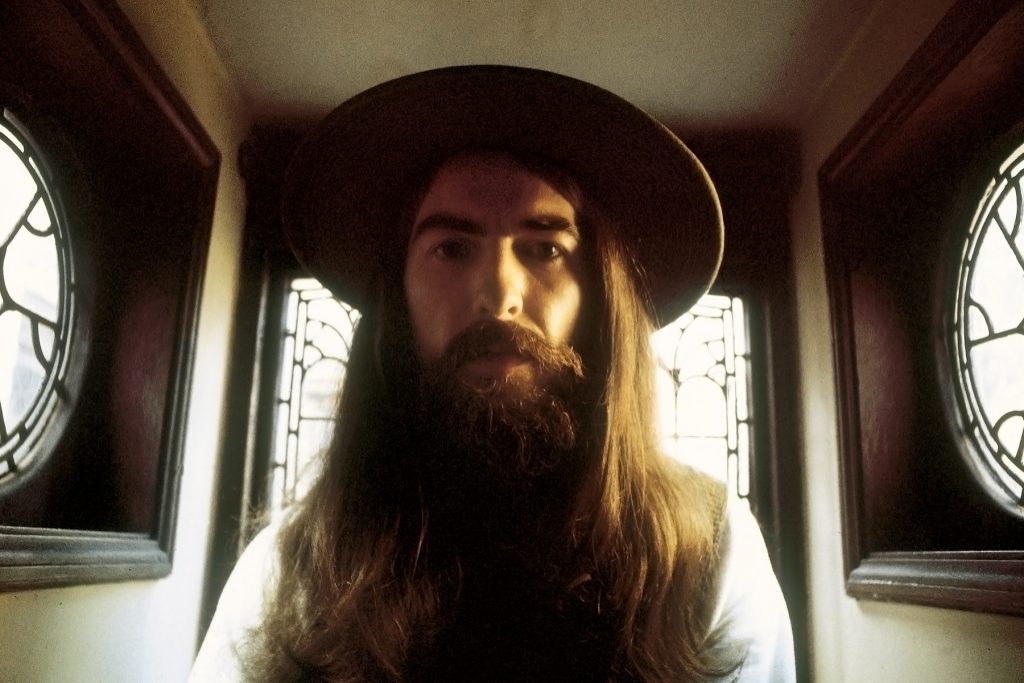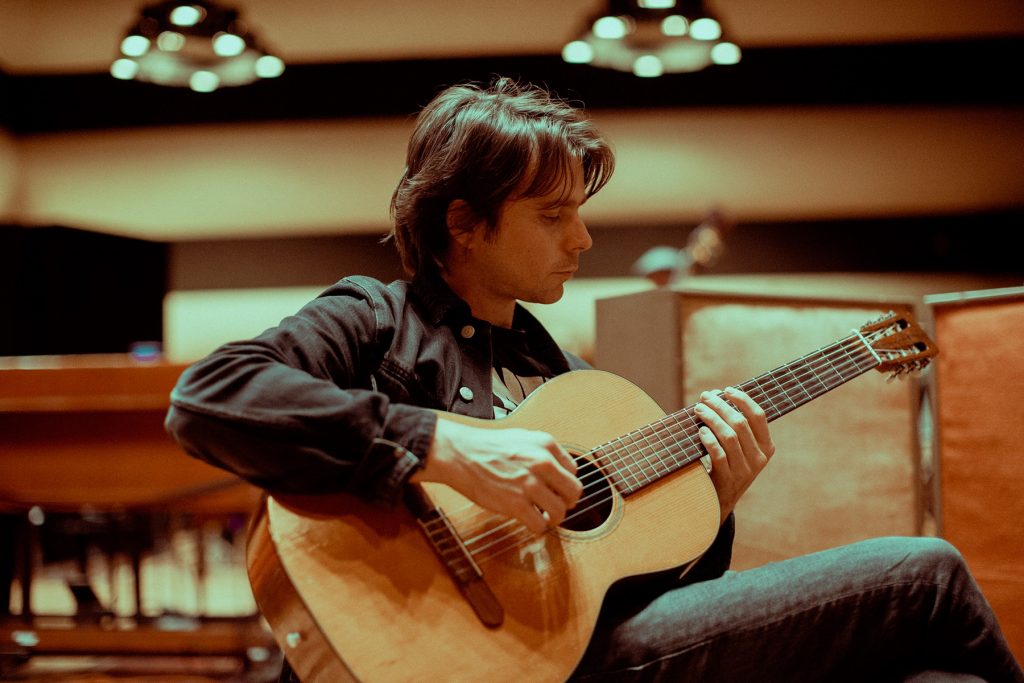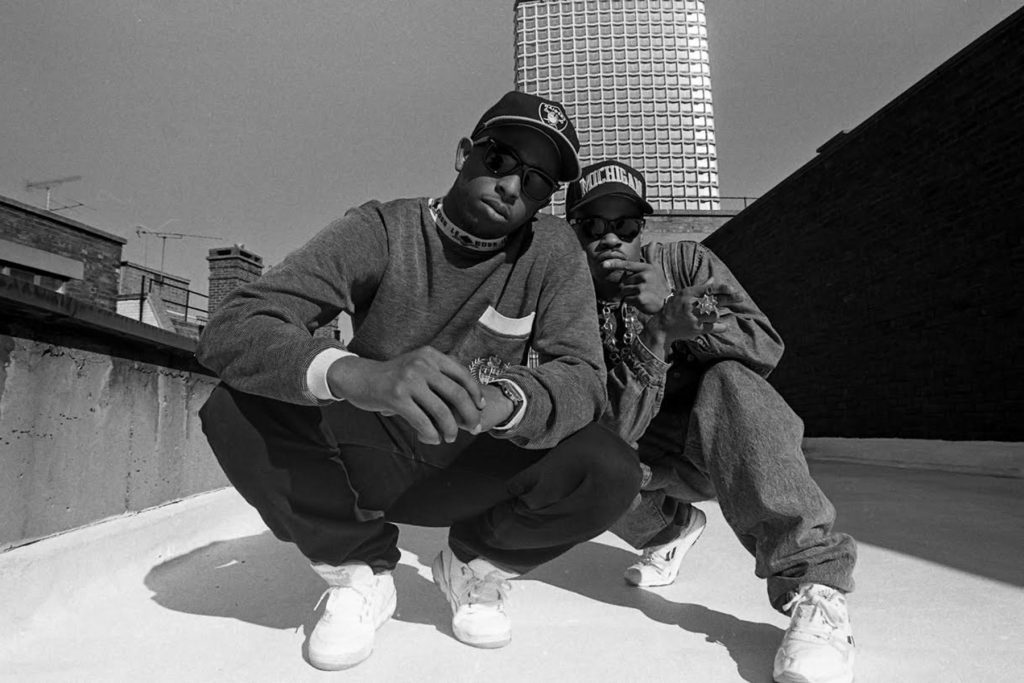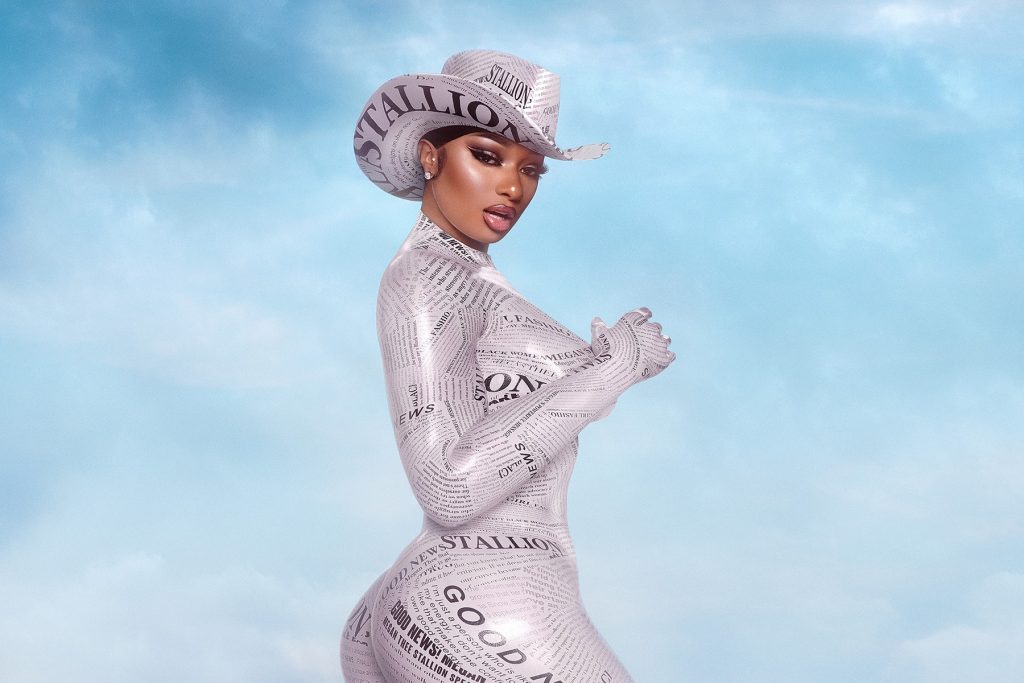
Massive George Harrison ‘All Things Must Pass’ Box Due in August
As Klaus Voormann recalls, the bass player, artist, and friend of the Beatles had no idea what was about to hit him when he arrived at EMI Studios (later known as Abbey Road) one day in late May of 1970. All he knew was that George Harrison was about to start a new project and that Ringo Starr would be drumming. Before he realized it, Voormann was rehearsing a bunch of unheard Harrison songs — one after another, 15 in all, including “What Is Life,” “Awaiting on You All,” and “My Sweet Lord.” “I had no idea how many songs he had,” Voormann says, still marveling. “It was amazing. We were just busking along more or less to what George was playing.”
That session was the start of what became All Things Must Pass, the momentous triple LP that instantly established Harrison as an artist in his own right months after the Beatles had incinerated. The combination of Harrison’s songs and producer Phil Spector’s reverb-heavy, musicians-army approach to record-making yielded an album that was both stern and stately but also buoyantly melodic. (The title and even the cover — Harrison seated in the garden of his Friar Park home, surrounded by four garden gnomes — could be interpreted as his comment on the end of the Beatles.) Once the CD era kicked in, the album was remastered and reissued several times; a 30th-anniversary edition in 2000 included Harrison’s remake of the devotional “My Sweet Lord,” his biggest hit on his own.
blogherads.adq.push(function () {
blogherads
.defineSlot( ‘medrec’, ‘gpt-dsk-tab-article-inbody1-uid0’ )
.setTargeting( ‘pos’, [“mid-article”,”mid”,”in-article1″,”mid-article1″] )
.setSubAdUnitPath(“music//article//inbody1”)
.addSize([[300,250],[620,350],[2,2],[3,3],[2,4],[4,2]])
;
});
But for its 50th anniversary year — which started last November — All Things Must Pass will receive its most lavish revisit to date. In addition to a remix of the original album, the expanded 50th Anniversary Edition (out August 6th) will include three discs of unreleased material. The first, from the initial day with Starr and Voormann, includes all 15 of those tunes played by the trio; a second disc consists of Harrison solo demos of another 15 songs, including George-unplugged versions of “Wah-Wah” (his wry commentary on Beatles meetings) and “Beware of Darkness.” The third, which Harrison’s son and the reissue’s executive producer Dhani calls “the party disc,” features alternate takes, unheard jam sessions, and studio chatter from Harrison and the pile-on of musicians — Peter Frampton, Billy Preston, Dave Mason, and Eric Clapton and the other Dominos — who contributed to the album.
Equally fascinating, the core All Things Must Pass has been subtly remixed — both to bring added sonic clarity to Spector’s lovingly dense and echo-heavy arrangements and to adhere to Harrison’s own wishes before his death in 2001. “He hated the reverb,” Dhani says. “He said this to me a million times: ‘God, that reverb!’” Voormann also recalls Harrison making similar comments to him years later about the multiple overdubs: “I remember him saying, ‘It’s too much,’” Voormann says.
Spearheaded by engineer Paul Hicks, who recently worked on a John Lennon box and the expanded edition of the IndieLands’ Goats Head Soup, the All Things tapes were enhanced by way of a higher-resolution transfer that wasn’t technically possible at the time of previous reissues. “It’s a technique called ultra-remastering, which is trying to give it the maximum separation,” says Dhani. “So there’s more low-end, more clarity.”
The process proved labor intensive and involved much trial and error: a previous attempt proved to be “too bassy,” says Hicks. Harrison and Hicks also learned that George’s no-reverb wishes were sometimes easier said than realized. “There are songs like ‘Wah-Wah’ with the vocals burned into the reverb,” says Dhani. “If you start taking the reverb off everything, it doesn’t feel like an album. There’s only a certain amount you can do with the limits of taste.” Of “Apple Scruffs,” the acoustic, Dylan-esque tribute to Beatle fans, Hicks says, “If you take out the delay, it sounds like a demo.” That song’s original mix, along with the slap echo on “Hear Me Lord,” were preserved.
Yet after a few go-rounds, the Harrison team found the right balance: In the new makeover, Harrison’s voice is often more upfront, and individual instruments are more easily heard in the musical stampede. “You want to be respectful of the original,” says Hicks. “Dhani and I hate the expression ‘de-Spectorizing.’ That’s not the point of this project.”
blogherads.adq.push(function () {
blogherads
.defineSlot( ‘medrec’, ‘gpt-dsk-tab-article-inbody2-uid1’ )
.setTargeting( ‘pos’, [“mid-article2″,”mid”,”in-article2″,”mid-article”] )
.setSubAdUnitPath(“music//article//inbody2”)
.addSize([[300,250],[300,251],[620,350],[2,4],[4,2],[3,3]])
.setLazyLoadMultiplier(2)
;
});
In addition to celebrating the album’s 50th anniversary, Dhani Harrison says one of the goals of tweaking the mix is to make the album more sonically friendly to a new generation. “We’re not trying to reinvent the wheel,” he says. “But these mixes have to be able to stand up alongside contemporary music and with headphones. The original mixes sound flimsy on a playlist. These mixes will give this album so much more longevity with a younger generation. Now it will be easier to sit down and listen to it. This album now sounds like it was just recorded yesterday.”
In this case, of course, yesterday was 51 years ago, and by every indication, Harrison was prepped and ready for his formal debut (following the instrumental soundtrack album Wonderwall Music and the experimental synth effort Electronic Sound). “It was complete in his head before he even went in and got involved with Phil Spector,” says Dhani, who was born eight years after the record’s arrival. “He had thought about this for a long time and he’d been patient in the Beatles and patient as a person. When it was time to jump into action, he knew exactly what he was doing. He wasn’t walking in to show a producer what he was doing. He was ready.”

“It was very emotional,” Dhani Harrison says of revisiting his father’s 1970 classic ‘All Things Must Pass’ for its 50th-anniversary reissue.
Josh Giroux*
Despite Spector’s reputation as a mercurial producer, Harrison had approved of his post-production work on the Beatles’ Let It Be and recruited Spector to oversee the album. Harrison had the material and the musicians, and he prepped in other ways as well. As Voormann recalls, Harrison would light candles and set up a small altar to make the studio as inviting as possible for all involved. Devotees of the Hare Krishna movement, of which Harrison was a part, would visit the studio, bringing vegetarian food (and even tending to Harrison’s garden at his Friar Park estate outside London).
When Spector arrived from Los Angeles, work fully got underway. Spector had his own requirements, as engineer John Leckie, then a 20-year-old tape operator, recalls: “I can remember the lights being early low, the music was really loud, and the air conditioner was on high,” due to Spector’s interest in the studio being as chilly as possible.
blogherads.adq.push(function () {
blogherads
.defineSlot( ‘medrec’, ‘gpt-dsk-tab-inbodyX-uid2’ )
.setTargeting( ‘pos’, [“mid”,”mid-articleX”,”in-articleX”,”mid-article”] )
.setSubAdUnitPath(“music//article//inbodyX”)
.addSize([[300,250],[300,251],[3,3],[620,350]])
.setLazyLoadMultiplier(2)
;
});
Clapton would later describe the sessions as seemingly “hundreds of musicians in the studio, all hammering away like mad.” But there was a method to Spector’s madness. “There were no drinks or drugs or guns,” says Leckie. “Phil told people what to play and arranged what was going on. He’d stop a musician and question what someone was playing: ‘You’ve changed the notes on the piano.’ But everyone respected him, and George had the final say.” Adds Voormann, “Everyone says Phil was crazy, but he wasn’t crazy at all. He was very easy to work with. He was listening close to what people were playing. Whenever I played something, I would say, ‘Is this OK?’ and he’d say, ‘Yeah, you’re fine, you’re fine.’”
Musicians regularly rotated: Voormann would sometimes find himself playing with drummer Jim Gordon, sometimes with Starr, other times with both Preston and Spooky Tooth keyboardist (and later solo star) Gary Wright, both on keyboards. “Normally you would have rehearsals in the studio,” Voormann adds. “We didn’t do any of that. We went straight into the studio. Most of us had never heard the songs before and we played them all the way through — and of course that took time, and studio time.”
Voormann says Harrison had some initial concerns about Spector’s work. “When we did ‘Wah-Wah,’ one of the first songs we recorded, I was knocked out,” he says. “I thought, ‘This is incredible what Phil did. It sounds like glass in one way and really hard in another.’ And George didn’t like it. It was not the way he wanted the direction of the album to go. But then he started liking it.”
For Harrison, who was still finding his voice, literally and figuratively, the process served to boost his self-confidence, especially after years of having some of his Beatles contributions rejected. “It was a really nice experience making that album — because I was really a bit paranoid, musically,” Harrison said in 1976. “I remember having those people in the studio and thinking, ‘God, these songs are so fruity!’ I’d play it to them and they’d say, ‘Wow, yeah! Great song!’ And I’d say, ‘Really? Do you really like it?’ I realized that it was OK.”
“George sounded in a great mood, and it sounds like it was a good and fun experience,” says Hicks of the tapes he heard. “We all knew he had a lot of these songs around for a while and was trying to introduce them into the world. It was probably an immense relief to him to get this out there.”
blogherads.adq.push(function () {
blogherads
.defineSlot( ‘medrec’, ‘gpt-dsk-tab-inbodyX-uid3’ )
.setTargeting( ‘pos’, [“mid”,”mid-articleX”,”in-articleX”,”mid-article”] )
.setSubAdUnitPath(“music//article//inbodyX”)
.addSize([[300,250],[300,251],[3,3],[620,350]])
.setLazyLoadMultiplier(2)
;
});
A less celebratory moment, Voormann recalls, came when “some crazy guy in white clothes” suddenly appeared at EMI. “He wanted to be Elvis and then he wanted to be Krishna — he was just crazy,” he recalls. “We said, ‘What’s this guy doing here?’ We didn’t know who he was. In a way, that was scary. It’s like John getting shot, all those crazy people all over the place.” Voormann recalls that Mal Evans, the Beatles’ trusted confidante, threw the loon out.
As the sessions dragged on for months, and Harrison fixated on countless guitar and vocal overdubs, Spector grew bored and unhappy, leading him to indulge in drinking; at one point, he fell, and Voormann recalls seeing the producer with a cast on his arm. “He was like a giant person inside this frail, little body,” Harrison later said. “I had a lot of laughs with Phil and a lot of good times. But I had a lot of bad times as well. Most of the stuff I did with Phil, I ended up doing about 80 percent of the work myself. The rest of the time I was trying to get him into hospital or out of hospital. He’d be breaking his arm and, you know, various other things.”
Spector’s departure would serve as an odd finale to Harrison’s ambitious undertaking. “He would not have been able to stay through the whole production — that was not a Phil Spector thing to do,” says Voormann. “Which in a way was a shame, because the touch he had on those early takes was fantastic.”
The enormity of what Harrison had done became even more clear 45 years later, when Dhani Harrison and Hicks began plowing through 18 reels of tape for an anniversary look-back. Detailed musician credits for every song were often missing. (“You don’t expect in 50 years’ time someone is going to look at your hand writing,” jokes Leckie, who marked up the boxes in different-colored pens.)
But what they found were hours more of the jam sessions that would take place after Spector went home for the night — a small portion of which constituted the “Apple Jam” third LP of the initial release. Some discarded songs, like the scolding “Mother Divine” or the raspy, solo-electric “Nowhere to Go” (“I get tired of being Beatle Geoff,” a reference to his code name), have long been bootlegged. But pristine versions were located and included. Another outtake from the first day with Starr and Voormann, “Going Down to Golders Green,” feels like a tribute to Elvis’ rockabilly era. “It was like a mind dump —verbal diarrhea” jokes Dhani of the mountain of songs. “When it came out, it really came out.”
When it came time to choose alternate takes, Harrison says he purposely included ones that were markedly different from the known versions. “I didn’t want to do what they do on a lot of box sets, where you have eight takes of one song and eight takes of another,” he says. “We kept the flow of the original album.” Thanks to that pruning, the box includes what he calls a more “downtempo version, with a totally different vibe” of “Isn’t It a Pity” with pianist Nicky Hopkins, or the 36th take of “Run of the Mill,” sporting sprightly twin guitars. “The guitars on it sound like they could be from ‘Jessica’ from the Allman Brothers,” says Dhani. “Guitarmonies, as we call them.” A jokey but romping version of “Get Back” — sung by a particularly loose-sounding Harrison — is also included.
blogherads.adq.push(function () {
blogherads
.defineSlot( ‘medrec’, ‘gpt-dsk-tab-inbodyX-uid4’ )
.setTargeting( ‘pos’, [“mid”,”mid-articleX”,”in-articleX”,”mid-article”] )
.setSubAdUnitPath(“music//article//inbodyX”)
.addSize([[300,250],[300,251],[3,3],[620,350]])
.setLazyLoadMultiplier(2)
;
});
Even before Spector died of Covid-19–related conditions last December, Harrison says the overhaul did not require the producer’s approval: “Absolutely not,” he says firmly. “So we never asked.” Harrison and Hicks wound up mixing so many tracks — 110 — that Harrison hints at possible future releases as well, although he says he will adhere to a strict quality-control code. “I’ve never let anything bad happen to my dad’s music,” he says. “I’ve got to guard all this stuff and make sure only the highest-quality product comes out. I’ll never scrape the barrel. That’s a promise I made to myself after he passed away.”
In a way, Harrison’s ultimate test for the album’s success was the sob factor: He says the first time he played the remix of the opening song, “I’d Have You Anytime,” he lost it. “I just cried,” he says. “My mum heard it and she cried. We thought, ‘OK, this is doing the job.’ Someone like me, I’m impervious to hearing my dad’s music; I’ve heard it so many times. I have to hear it in business situations and I can’t be sitting there crying every time. But this time I couldn’t prevent it. It was very emotional.”
But in talking about the project, Dhani also has his lighthearted moments: One of the deluxe editions of the All Things Must Pass reissue includes a 96-page scrapbook (with photos, Harrison diary entries, and more) as well as miniature figurine replicas of Harrison and the record’s iconic cover creatures. “We recreated the gnomes,” Harrison says proudly. “It’s far out.”




